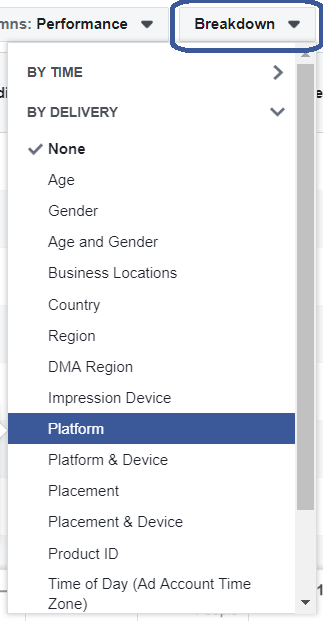The short answer: No.
When developing a social media marketing strategy, one of the first decisions you need to make is which platform to advertise on. And when it comes to Facebook vs. Instagram, there’s an additional layer of complexity to the question, because ads for both platforms are run through the same system in Facebook’s Ads Manager. Ads Manager gives users the option of either keeping their Facebook and Instagram strategies separate, or running campaigns across both platforms simultaneously. I’ve seen a lot of confusion about this among people who aren’t familiar with the space, so I’m going to try to clear things up a little bit and explain why, when deciding whether to run your ads on Facebook or on Instagram, you will almost always see the best results when the answer is “both”.
Why You May Be Tempted to Keep Facebook & Instagram Ads Separate
As a user, Facebook and Instagram are two very different social networks, and they each have distinct user experiences, cultures, and demographics. This can lead advertisers to believe that the best way to organize their advertising strategy and maximize performance is to develop separate campaigns for Facebook and for Instagram, with ads specifically designed to run on one platform or the other. Another reason advertisers may decide to separate their campaigns by platform is to test performance to determine which platform is most effective for them, so that they can run their ads only on the platform that performs the best. In theory, both of these strategies sound like good ideas and seem to be logically sound. However, in practice, they conflict with Facebook’s built-in optimization features and can diminish overall results.
Why You Will See Better Performance Running Ads to Both Platforms Simultaneously
It’s helpful to think of it this way: with Facebook’s Ads Manager, ads aren’t being delivered to the platform, they’re being delivered to the person. When determining when and where to serve your ads, Ads Manager prioritizes reaching the right people (users who match your targeting criteria and are likely to engage positively with your ad) wherever they may be.
Say, for example, there is a user who matches your perfect customer profile who logs into Facebook 4 days out of the week and logs into Instagram the other 3 days. Each day, your ads enter the auction with the goal of serving to this perfect customer. However, if your ads are only running on one of the two platforms, you will only have the opportunity to reach this customer 40-60% of the time. The rest of the days, your ads will serve to slightly lower-quality prospects, because your perfect customer was not online on the platform that the ads were serving to. This remains true whether you have only one campaign running to a single platform, or multiple campaigns running to each platform separately. In contrast, if your strategy allows Ads Manager to run your ads to both Facebook and Instagram, your ads will be able to serve to the optimal person 100% of the times that they are online.
How You Can Optimize By Platform Without Keeping Them Separate
Ads Manager includes two important features which enable advertisers to understand how the different platforms are performing and optimize for each without keeping ads confined to only run on a single platform.
The first helpful feature is an option in the ad building tool which allows you to customize your ad based on placement. This tool enables customization of the media and text for any given ad, based on where that ad will be served. For example, if you want to run an ad on both Facebook and Instagram, but you want to use different image dimensions for the two platforms, you can use this tool to customize the image so that the version of the ad that appears on Facebook has a rectangular image, and the version that appears on Instagram has a square image. This allows advertisers to match their ad content to each platform without breaking up their strategy and keeping the platforms completely separate.
Customize by Placement – Placement Options

The second feature which enables advertisers to optimize by platform is the performance breakout capabilities available in reporting. Ads Manager can break down performance data (spend, impressions, clicks, etc.) across a number of different dimensions, including ad placement. This means that regular reports and performance check-ins can include comparing performance across platforms at a number of different levels. You can see which platform is driving the best KPI results overall, whether particular audiences may be more likely to convert on one platform versus the other, and you can even see if any individual ads resonate better on a particular platform. This provides a huge volume of valuable insights into how users engage with your ads and enables advertisers to extract key learnings about the differences between the platforms without needing to sacrifice efficiency for the sake of keeping the data separate.
Customize by Placement – Customization Options

Performance Breakdown Options

In Conclusion
Although it’s understandable to think that the only way to effectively manage ads across these two different platforms is to keep them separate, there are great optimization opportunities and insights available, even without splitting up your strategy. And, ultimately, overall performance is a game of averages, and for the reasons discussed above,shutting down or separating out one platform entirely – even if it looks like it’s under-performing compared to the other – will often hurt your average.
